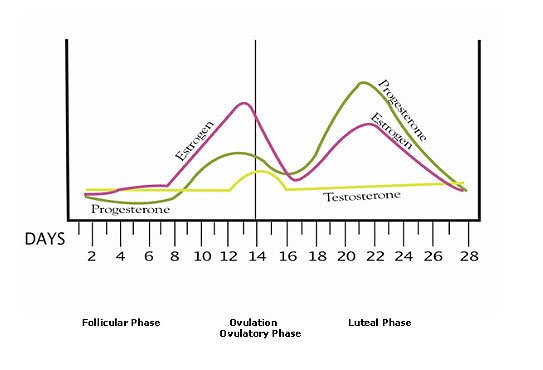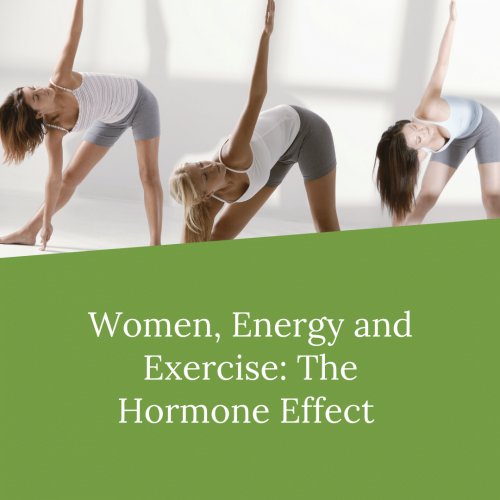We have finally started to understand the real key biological differences between men and women, and it’s now shifting towards looking at these major differences in how they should relate to lifestyle. According to the American Autoimmune Related Diseases Association, approx. 50 million Americans are now affected by autoimmune diseases AND it is one of the top 10 leading causes of death of women under the age of 65 (1).
Men and women are more different than we thought
Let’s look at exercise and I want to focus on women of childbearing years here. As a Functional Medicine Health Coach, I specialise in helping you to achieve your healthiest lifestyle. It is well known now that sitting is the new smoking so we need to be exercising more and there are plenty of options out there to choose from, so what is the right one? Well, here’s the issue. The right exercise for a man is not always going to be the right exercise for a woman. Why? A review of 1382 sport and exercise research studies involving over 6 million participants, from 2011 to 2013, found the representation of women to be 39%. The complexities of the menstrual cycle are considered major barriers to the inclusion of women in clinical trials. So it seems that not only does one diet not fit all, perhaps neither does exercise. It’s not that women can’t do what men do, we perhaps just need to look at when the best possible time during our cycle is.
It's all about the time of the month
How many of you menstruating ladies can honestly say you have the same amount of stamina, energy, and vitality every day of the month? Would you say that the worst time is the second half of your cycle and especially during menstruation? Let’s start with the basics to understand why this is normal. You probably notice that you have the most energy and stamina during the first half of your cycle; that is, the days starting after your bleeding stops. These are the Follicular (7-10 days) and the Ovulation (3-5 days) phases. This is when your key female reproductive hormones, oestrogen, progesterone and testosterone, start out at their lowest and build to be at their peak over the next few weeks. Next, a luteinizing hormone surge occurs which then triggers ovulation in the body and kicks off the next two phases, Luteal (10-14 days) and Menstrual (3-7 days). The luteal phase is when your hormones reach their peak before starting to dip again to their lowest and start the bleeding phase. What do these highs and lows in hormone speak actually mean to you? A 2017 study in PLOS ONE looked at physical performance in female soccer players during their menstrual cycle, and found that there was better endurance during the first half of their cycle (follicular and ovulation) over the second half (luteal and menstrual). So, if you want to partake in intense workouts its probably best to save those for the phases post menstruation.

We also know that our fluctuating hormones have an effect on our metabolism which shifts up and down during our cycle too. During the second half of your cycle (luteal and menstrual), your metabolism is at its highest. So, as you will naturally burn more calories, you will also naturally become exhausted faster. Trying to intensify workouts in this phase will likely go against our hormones, causing you to create more cortisol (stress hormone) which leads ironically to fat storage and burning lean muscle mass instead. Maybe not the best idea! Instead, look at doing these workouts at the beginning of your cycle (follicular and ovulation) as your metabolism is naturally at its lowest but your energy and stamina are at its highest. Here, you burn fat more easily and gain muscle so it would be the ideal time to push it. In fact, a 2014 study in Springerplus showed that strength training in the follicular and ovulation phases builds more muscle than strength training in the later luteal and menstrual phases. Not only does our menstrual cycle affect our exercise performance, but too much exercise can likewise affect our menstrual cycle. A 2007 study in the Journal of Biological Rhythm Research found that if the exercise load is great enough it can lead to irregular or even the complete absence of menstruation, which has implications for reproductive health.
We women are more complex, and that's a good thing
So we are beginning to realise the sheer complexity of the woman and her hormones, and how we need to look closer at applying varied lifestyles around the female cycle (more blogs to come!). There are some fabulous apps out there now that take the guesswork out of your cycle. Why not get in tune with your body and start to chart. It can be very liberating to know the correlation between where you are in your cycle versus your overall energy and stamina. But remember, when you are feeling like your body can’t keep up, chances are it can’t. Rather than do more harm than good, really listen to your body and respond to what it is telling you. This is always going to be the key as everyone is different!
It is also important to note that in this day and age, the menstruating superwoman is juggling many different hats and burning the candle at each end. This causes our hormones to be out of balance. If you have any PMS symptoms from cramps and acne, to pain to heavy bleeding, to little or no bleeding, your hormones may be out of balance. Symptoms can also include anxiety, fatigue, depression, and struggling to lose weight. Hormones out of whack can create more health issues down the road so please see a Functional Medicine Doctor to get to the root cause of the issues and get you back into balance.
If you'd like more help changing or achieving your healthiest lifestyle, losing weight, getting more energy or looking at your cycle then please email me carolyn@theperrymount.com or look at my webpage HERE.
References:
https://www.aarda.org/state-autoimmune-disease-national-summit-report-released/
https://bjsm.bmj.com/content/51/6/487.short
https://www.ncbi.nlm.nih.gov/pmc/articles/PMC5348024/
https://www.tandfonline.com/doi/abs/10.1080/09291010802067213
American Journal of Human Biology
Vitti, A. 2020, In the FLO, HarperCollins, New York
Hormone chart: https://womeninbalance.org/about-hormone-imbalance/



